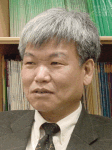博文
韩国地球物理学家Jung-Ho Kim四月将在中国讲学
|||
Most geophysical methods aim to obtain spatially varying information concerning subsurface material properties. As a result their measured data and interpreted results are expressed in terms of spatial coordinates. However, in some special geophysical approaches, in addition to the spatial domain, the variations of material properties in non-spatial dimensions are studied.
Typical techniques of this kind are time-lapse geophysical monitoring and the Spectral Induced Polarization (SIP). These two different methods can be viewed under the same interpretation angle in the sense that nonspatial dimension (time or frequency) is incorporated into the data measurement and interpretation procedures. This lecture introduces a new interpretation approach in which both the spatial and nonspatial dimensions are jointly considered within the geophysical processing procedure.
Common practice was to treat this type of "complex" geophysical data as an assembly of individual spatial datasets. Consequently, individual interpretation of each dataset leads to retrieving individual spatial parameter models which are difficult to correlate along the new axis. In the new approach, both measured data and the subsurface model are considered in a unified coordinate system defined in both spatial and nonspatial domains. Subsequently the sets of the individual structural models and data in the space domain become respectively a single model and a single data set in the new global coordinate system. This allows us to obtain a subsurface structure in both space and nonspace domains using just a single inversion process, and furthermore to introduce á priori information along the nonspatial axis. Overall the new approach provides a more solid tool to interpret this type of data and allows the more realistic representation of the subsurface structure.
The lecture will be balanced between presentation of the theoretical development and the demonstration of the practical applicability. This will be achieved mostly by presenting practical application of the approach into resistivity monitoring and SIP data coming from various environmental and engineering case studies such as hydro-geophysical experiments, assessment of ground re-enforcement works, ground condition changes caused by tunnel construction works, landslide, etc.
|
12 |
April |
Beijing,China |
|
|
13 |
April |
Beijing,China |
China University of Geosciences, Geophysical Society (Beijing) |
|
14 |
April |
Beijing,China |
|
|
18 |
April |
Chengdu,China |
Chengdu University of Technology
韩国地球物理学家Jung-Ho Kim简介 Jung-Ho Kim received a B.Eng. (1980) in mining engineering, an M.Eng. (1982) and a Ph.D. (1987) in applied geophysics from Seoul
National University, South Korea. In 1982 he joined the Korean Institute of Geoscience and Mineral Resources (KIGAM) where he is currently working as a tenured researcher. His research interests were mainly focused in the modeling and inversion of electrical and electromagnetic methods and their applications to engineering and environmental problems. His early research efforts in the 90's on resistivity inversion have contributed to rendering 2D- and 3D- resistivity imaging popular and the most common geophysical method in the Korean geophysical community in 90s. Further, Kim's research in radar methods involved addressing borehole and directional radar techniques. His research interests also extended into addressing geophysical problems in more complicated environments, such as water covered areas, anisotropic environments, etc. His recent research interests lie with multiparametric and multidomain interpretation of electrical and electromagnetic data. As a result of his research achievements, the Ministry of Science and Technology of Korea selected his research group, Geo-electric Imaging Lab., to become a National Research Laboratory. He served the Korean Society of Exploration Geophysicists (KSEG) as the editor-in-chief from 2005 to 2007 and as a special guest editor of the journal jointly published by KSEG, the Society of Exploration Geophysicists of Japan and the Australian Society of Exploration Geophysicists from 2004 to 2007. He has been awarded the distinction of "Researcher of the Year" from three institutions: the Korean Institute of Mineral and Energy Resources Engineering (1998), KIGAM (2007) and KSEG (2009). He is also an adjunct professor at the Korea Advanced Institute of Science and Technology, where he is teaching geophysical imaging techniques. |
https://blog.sciencenet.cn/blog-339326-430094.html
上一篇:毛宁波2011年《地震勘探原理》新课件(第12讲)
下一篇:中东和北非国家石油日产量占全球1/3
